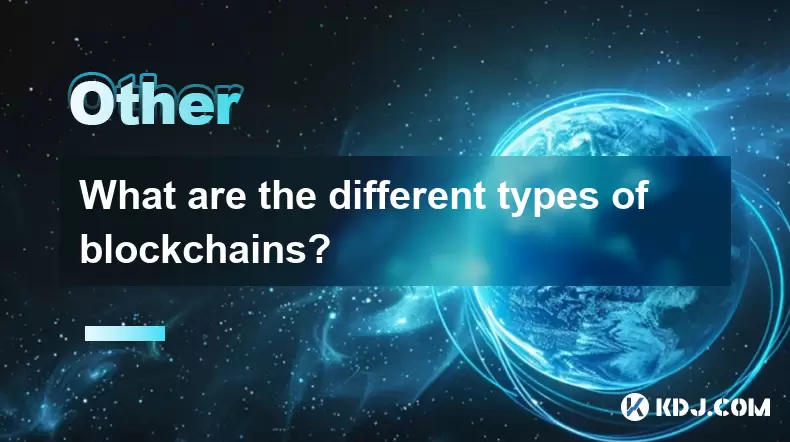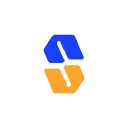-
 Bitcoin
Bitcoin $112400
-1.07% -
 Ethereum
Ethereum $3409
-3.27% -
 XRP
XRP $2.784
-6.60% -
 Tether USDt
Tether USDt $0.9997
-0.03% -
 BNB
BNB $739.3
-2.09% -
 Solana
Solana $158.0
-2.90% -
 USDC
USDC $0.9998
-0.02% -
 TRON
TRON $0.3213
-0.94% -
 Dogecoin
Dogecoin $0.1929
-5.01% -
 Cardano
Cardano $0.6974
-2.82% -
 Hyperliquid
Hyperliquid $36.69
-2.31% -
 Sui
Sui $3.327
-4.80% -
 Stellar
Stellar $0.3672
-5.18% -
 Chainlink
Chainlink $15.65
-3.07% -
 Bitcoin Cash
Bitcoin Cash $525.0
-1.68% -
 Hedera
Hedera $0.2291
-6.00% -
 Avalanche
Avalanche $20.91
-2.96% -
 Ethena USDe
Ethena USDe $1.000
0.00% -
 Toncoin
Toncoin $3.520
-1.12% -
 UNUS SED LEO
UNUS SED LEO $8.968
0.14% -
 Litecoin
Litecoin $105.7
0.26% -
 Shiba Inu
Shiba Inu $0.00001181
-1.79% -
 Polkadot
Polkadot $3.492
-2.08% -
 Uniswap
Uniswap $8.800
-3.10% -
 Dai
Dai $0.9999
-0.01% -
 Monero
Monero $289.9
-3.17% -
 Bitget Token
Bitget Token $4.243
-1.27% -
 Pepe
Pepe $0.00001006
-3.67% -
 Cronos
Cronos $0.1248
-5.68% -
 Aave
Aave $249.7
-2.50%
How to implement the traceability function of blockchain? What industries are suitable for?
Blockchain traceability revolutionizes tracking goods from origin to destination, enhancing transparency and security across industries like food, pharma, and luxury goods.
Apr 27, 2025 at 02:36 pm

The traceability function of blockchain technology offers a revolutionary approach to tracking and verifying the origin, authenticity, and movement of goods and services. This function leverages the decentralized, immutable, and transparent nature of blockchain to create a reliable record of transactions and data points across various stages of a product's lifecycle. In this article, we will explore how to implement the traceability function of blockchain and identify the industries that are most suitable for its application.
Understanding Blockchain Traceability
Blockchain traceability refers to the use of blockchain technology to record and track the journey of a product from its origin to its final destination. Each transaction or data entry related to the product is recorded as a block on the blockchain, creating an immutable and transparent ledger that can be accessed and verified by all participants in the network. This ensures that the information is tamper-proof and provides a high level of transparency and accountability.
Steps to Implement Blockchain Traceability
Implementing blockchain traceability involves several key steps that need to be carefully planned and executed. Here is a detailed guide on how to achieve this:
Identify the Product Lifecycle Stages: Begin by mapping out the entire lifecycle of the product, from raw material sourcing to manufacturing, distribution, and final sale. Understanding these stages will help in determining the data points that need to be tracked.
Select a Suitable Blockchain Platform: Choose a blockchain platform that aligns with your needs. Popular options include Hyperledger Fabric for enterprise solutions, Ethereum for its smart contract capabilities, and Corda for financial services. Consider factors such as scalability, security, and ease of integration.
Design the Data Structure: Define the structure of the data that will be recorded on the blockchain. This includes details such as product ID, batch number, origin, date of manufacture, and any other relevant information. Ensure that the data structure is standardized to facilitate easy integration and verification.
Integrate with Existing Systems: Ensure that the blockchain solution can be seamlessly integrated with existing enterprise systems such as ERP, CRM, and inventory management systems. This integration is crucial for real-time data synchronization and to avoid operational disruptions.
Develop Smart Contracts: Use smart contracts to automate the execution of certain actions based on predefined conditions. For example, a smart contract can be programmed to trigger an alert if a product's temperature exceeds a certain threshold during transportation.
Implement Data Entry Mechanisms: Set up mechanisms for entering data into the blockchain. This can be done manually through user interfaces or automatically through IoT devices and sensors that feed real-time data into the blockchain.
Ensure Data Security and Privacy: Implement robust security measures to protect the data on the blockchain. This includes encryption, access controls, and regular audits to ensure compliance with data protection regulations.
Test and Validate the System: Before full deployment, conduct thorough testing to ensure that the blockchain traceability system functions as intended. This includes testing the integration with existing systems, the accuracy of data recording, and the performance of smart contracts.
Train Staff and Stakeholders: Provide training to all relevant staff and stakeholders on how to use the blockchain traceability system. This will ensure that they understand its benefits and can effectively contribute to its success.
Monitor and Maintain the System: After deployment, continuously monitor the system's performance and make necessary adjustments. Regular maintenance and updates are essential to keep the system running smoothly and to address any emerging issues.
Industries Suitable for Blockchain Traceability
Blockchain traceability can be applied to a wide range of industries, each benefiting from the technology's ability to enhance transparency, security, and efficiency. Here are some of the industries that are particularly well-suited for blockchain traceability:
Food and Agriculture
The food and agriculture industry can greatly benefit from blockchain traceability to ensure food safety and quality. By tracking the journey of food products from farm to fork, stakeholders can quickly identify and address any issues related to contamination or spoilage. This not only enhances consumer trust but also helps in complying with stringent food safety regulations.
Pharmaceuticals
In the pharmaceutical industry, blockchain traceability can be used to track the production, distribution, and sale of drugs. This ensures that counterfeit drugs are kept out of the supply chain and that patients receive genuine medications. The immutable nature of blockchain also helps in maintaining the integrity of clinical trial data.
Luxury Goods
The luxury goods sector can leverage blockchain traceability to combat counterfeiting and ensure the authenticity of products. By recording the provenance and ownership history of luxury items, brands can provide customers with a verifiable record of authenticity, thereby enhancing brand value and customer trust.
Automotive
In the automotive industry, blockchain traceability can be used to track the supply chain of vehicle parts. This ensures that only genuine parts are used in the manufacturing and repair of vehicles, thereby enhancing safety and reliability. Additionally, blockchain can help in tracking the ownership history of vehicles, which is useful for resale and insurance purposes.
Electronics
The electronics industry can use blockchain traceability to track the lifecycle of electronic components and products. This helps in ensuring compliance with environmental regulations and in managing the recycling and disposal of electronic waste. By providing a transparent record of the product's journey, companies can also enhance their corporate social responsibility efforts.
Implementing Blockchain Traceability: Real-World Examples
Several companies have already implemented blockchain traceability in their operations, providing valuable insights into its practical applications. For instance, Walmart has used blockchain to track the origin and journey of food products, significantly reducing the time required to trace the source of foodborne illnesses. Similarly, De Beers uses blockchain to track the journey of diamonds from mine to retail, ensuring that they are conflict-free and ethically sourced.
Frequently Asked Questions
Q: Can blockchain traceability be integrated with existing supply chain management systems?
A: Yes, blockchain traceability can be integrated with existing supply chain management systems. This involves selecting a compatible blockchain platform and ensuring that data structures are standardized for seamless data exchange. Many blockchain solutions come with APIs and middleware that facilitate integration with ERP, CRM, and other enterprise systems.
Q: How does blockchain traceability help in reducing costs for businesses?
A: Blockchain traceability can help reduce costs by improving supply chain efficiency, reducing the risk of fraud and errors, and enhancing product quality. By providing real-time visibility into the supply chain, businesses can identify and address inefficiencies, thereby reducing operational costs. Additionally, the ability to quickly trace and recall products in case of issues can minimize financial losses.
Q: What are the main challenges in implementing blockchain traceability?
A: The main challenges in implementing blockchain traceability include the need for standardization across the supply chain, the complexity of integrating with existing systems, and the requirement for stakeholder buy-in. Additionally, ensuring data privacy and security while maintaining transparency can be challenging. Overcoming these challenges requires careful planning, robust security measures, and effective communication with all parties involved.
Q: How can small businesses benefit from blockchain traceability?
A: Small businesses can benefit from blockchain traceability by enhancing their product quality and transparency, which can help build customer trust and loyalty. Additionally, blockchain can provide small businesses with access to global markets by ensuring compliance with international regulations and standards. By leveraging cost-effective blockchain solutions, small businesses can compete more effectively with larger enterprises.
Disclaimer:info@kdj.com
The information provided is not trading advice. kdj.com does not assume any responsibility for any investments made based on the information provided in this article. Cryptocurrencies are highly volatile and it is highly recommended that you invest with caution after thorough research!
If you believe that the content used on this website infringes your copyright, please contact us immediately (info@kdj.com) and we will delete it promptly.
- BlockDAG, SEI, Ethena: Top Crypto Performers Under the Microscope
- 2025-08-03 10:50:16
- Bitcoin Blasts Past $119K: How Institutional Adoption and Macro Shifts Fuel the Fire
- 2025-08-03 10:55:16
- Crypto, Grok, and August: Decoding the Latest Trends and Insights
- 2025-08-03 11:10:16
- Crypto, Phishing, and Your Wallet: A New Yorker's Guide to Staying Safe
- 2025-08-03 10:30:16
- Troller Cat Meme Coin Presale Soars: A New King in the Crypto Jungle?
- 2025-08-03 10:30:16
- Grayscale, Altcoin Trust, and Mid-Cap Mania: What's the Deal?
- 2025-08-03 08:50:16
Related knowledge

What is the difference between on-chain and off-chain transactions?
Aug 02,2025 at 04:22pm
Understanding On-Chain TransactionsOn-chain transactions refer to digital asset transfers that are recorded directly on a blockchain ledger. These tra...

What is the double-spending problem and how does blockchain prevent it?
Aug 02,2025 at 01:07pm
Understanding the Double-Spending ProblemThe double-spending problem is a fundamental challenge in digital currency systems where the same digital tok...

What is the difference between a blockchain and a database?
Aug 01,2025 at 09:36pm
Understanding the Core Structure of a BlockchainA blockchain is a decentralized digital ledger that records data in a series of immutable blocks linke...

How does blockchain handle scalability?
Aug 02,2025 at 02:58pm
Understanding Blockchain Scalability ChallengesBlockchain scalability refers to a network's ability to handle an increasing volume of transactions wit...

What are the different types of blockchains?
Aug 03,2025 at 03:01am
Public Blockchains: Open and Decentralized NetworksPublic blockchains are the most widely recognized type of blockchain, characterized by their open a...

What is a hash in a blockchain?
Aug 02,2025 at 05:28am
Understanding the Concept of Hash in BlockchainA hash in the context of blockchain technology refers to a unique digital fingerprint generated by a cr...

What is the difference between on-chain and off-chain transactions?
Aug 02,2025 at 04:22pm
Understanding On-Chain TransactionsOn-chain transactions refer to digital asset transfers that are recorded directly on a blockchain ledger. These tra...

What is the double-spending problem and how does blockchain prevent it?
Aug 02,2025 at 01:07pm
Understanding the Double-Spending ProblemThe double-spending problem is a fundamental challenge in digital currency systems where the same digital tok...

What is the difference between a blockchain and a database?
Aug 01,2025 at 09:36pm
Understanding the Core Structure of a BlockchainA blockchain is a decentralized digital ledger that records data in a series of immutable blocks linke...

How does blockchain handle scalability?
Aug 02,2025 at 02:58pm
Understanding Blockchain Scalability ChallengesBlockchain scalability refers to a network's ability to handle an increasing volume of transactions wit...

What are the different types of blockchains?
Aug 03,2025 at 03:01am
Public Blockchains: Open and Decentralized NetworksPublic blockchains are the most widely recognized type of blockchain, characterized by their open a...

What is a hash in a blockchain?
Aug 02,2025 at 05:28am
Understanding the Concept of Hash in BlockchainA hash in the context of blockchain technology refers to a unique digital fingerprint generated by a cr...
See all articles

























































































